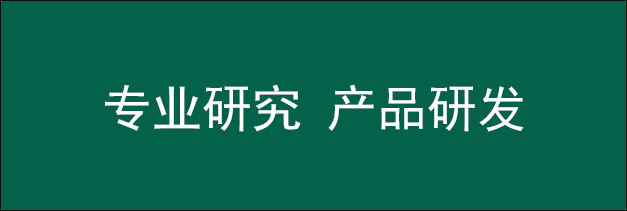2016/01/24
1928 First Maersk Line voyage
At the beginvning of the 1920s, A.P. Moller considered the possibilities of going into the liner business. The tramp trade, where vessels sailed from port to port depending on the demand, was expected to lose ground to liners in time. In addition, the participation in liner services was in keeping with Mr A.P. Møller’s policy on investment and risk diversification.
This, of course, required careful consideration and thorough preparation – and a favourable agreement. Such an agreement was made with the Ford Motor Company. On 12 July 1928 the m.s. LEISE MÆRSK left Baltimore on its first voyage from the American East Coast via the Panama Canal to the Far East and back. The cargo consisted of Ford car parts and other general cargo.
1946 First liner service after the second world war
After the war in 1945, the priority for A.P. Moller was to get vessels moving again before competitors captured the market. The Maersk fleet had been hit by many losses during the war, and the remaining vessels, from being used by warring countries, were run-down. Furthermore, the Shipping Board’s demand for duty voyages delayed the resumption of Maersk Line activities.
Despite these obstacles and a much-needed reorganisation within Maersk Line, A.P. Moller succeeded. As early as March 1946, A.P. Moller resumed monthly sailings on the so-called Panama Line from the American East Coast via the Panama Canal to the Far East. CHASTINbvE MÆRSK made Maersk Line’s first voyage after the Second World War, departing from New York on 16 March 1946 and calling at Manila, the Philippines and Shanghai, China.
Learn more about our Triple-E vessels.
CHASTINE MÆRSK
1947 The Transatlantic Line
As a consequence of the transport needs supporting the rebuilding of war-torn Europe, Maersk participated in the competition by setting up the Transatlantic Line.
1950 Expansion of the liner network
The traditional tramping activities of the Maersk shipping companies receded into the background as the liner business expanded following the reconstruction of Maersk Line after the Second World War. Adding to the original line between the American East Coast and the Far East, the initial expansion started in Japan. Lines to Thailand, Indonesia, Hong Kong, India and other countries towards the Persian Gulf were gradually added, and some vessels were deployed on a ‘Round-the-World Line’.
In 1958, West African ports were included on routes to and from Japan and the American East Coast.
1956 The container revolution
On 26 April 1956, ocean-borne container transport was introduced with the shipment of a Sea-Land container aboard the IDEAL X from Port Newark, New Jersey, to Houston, Texas.
Sea-Land container aboard the IDEAL X
1966 First international container shipment
Sea-Land’s FAIRLAND undertook the first international shipment of containers.
Sea-Land’s FAIRLAND
1967 First European container lines
P&O was part of the first European initiative, a pooling of liner services from four companies into the new company Overseas Containers Limited (OCL).
1968 Europe – Far East
Maersk Line and Kawasaki Line initiated cooperation in the Europe Far East trade. On 9 March 1968, CHARLOTTE MÆRSK commenced loading in Antwerp, Belgium to start a fortnightly service.
Sister vessel CHRISTIAN MÆRSK
1973 A new department in Maersk Line
Effectively signalling the new times ahead, a new department called Maersk Container Line was established within Maersk Line in Copenhagen, Denmark.
The staff concentrated on building up the organisation, which was aimed at handling the new business area. Also in 1973, Maersk Line’s seven-pointed star logo was introduced. It was created by the Danish designer and architect Acton Bjørn (1910-1992).
The current Maersk Line Logo
1975 Container vessels in Maersk Line
The transition to modern container transport called for heavy investment, and after several years of consideration all major liner shipping companies made the first preparations in the middle of the 1960s.
A.P. Moller’s thoughts on an independent container trade were discussed thoroughly and, in the spring of 1973, an order was placed for nine fast container vessels for delivery in 1975-1976. This marked the beginning of one of the largest projects in the A.P. Moller history, more than DKK 2 billion was soon invested in vessels, terminals, containers, marketing and promotion of this new service.
As the first of the new container vessels, ADRIAN MÆRSK departed from the Maersk Line terminal in Port Newark, New Jersey on 5 September 1975.
She had a cargo capacity of about 1,400 TEU. She has changed name several times and was sold as MAERSK ALASKA in 2006 – after more than 30 years of loyal service in the A.P. Moller fleet.
ADRIAN MÆRSK in the Panama Canal
1975 Specialised port facilities
As the container revolution introduced a new vessel type, port facilities changed. Short and efficient port stays were, and still are, one of the major advantages of container transport. This called for specialised terminals with container cranes, areas for container storage, warehouses for transhipment of goods, office facilities, and a workshop for repair of containers and equipment. Parts of an existing terminal were often rented for the exclusive use of A.P. Moller’s vessels.
A.P. Møller - Mærsk A/S’ involvement in port operations has been expanded continuously. In 2001, the activities were centralised in APM Terminals, which today handles the Group’s interests in more than 50 terminals all over the world.
ADRIAN MÆRSK at Newark Terminal
1977 Door-to-door transport
With the containerisation of liner services in the 1970s, the need for specialised loading (consolidation) of containers increased to attain higher utilisation of available container space. This stimulated the need for improved information and documentation flow, which led to the establishment of Maersk Logistics, originally called Mercantile.
During the 1980s, other services were introduced to manage supply chains from cargo origin to the stores. Today, Maersk Logistics’ services include preparation of transport documents, airfreight, as well as warehousing and distribution. Advanced information technology is used for managing the supply chain and keeping customers informed.
Mercantile
1990 Cooperation on Europe - Far East
P&O Container Lines and Maersk Line established an operating agreement on the Europe - Far East services which lasted until 1996.
1993 Danish liner business remains Danish
A.P. Moller took over liner routes, liner vessels and containers, as well as certain activities and organisations in the Far East and Australia from the East Asiatic Company (EAC).
In relation to the takeover, Mærsk Mc-Kinney Møller said: It is sad and I am sorry that the EAC had to give up its historical liner business, but our decision will hopefully be regarded as nationally constructive. It brought certainty to the EAC at a critical time and also ensured that important EAC activities remained in Danish hands.
1995 Worldwide operating alliance
Sea-Land and Maersk Line entered an operating alliance serving most major port ranges.
1996 The world’s largest container vessel
The first REGINA MÆRSK was named in 1954. The vessel weighed 6,500 tons and had a crew of 44. The most recent REGINA MÆRSK weighs 34,500 tons and has a crew of 15.
The modest crew requirement is due to the fact that the vessel is thoroughly automated and equipped with the most modern navigation, communication and safety equipment.
With a cargo carrying capacity of 6,000 TEU (twenty-foot equivalent units), the REGINA MÆRSK was the world’s largest reefer vessel in 1996. Being too large for the Panama canal, it is called a post-panamax vessel.
REGINA MÆRSK
1996 Merger to form P&O Nedlloyd
P&O Container Lines and Nedlloyd Lines merged to form P&O Nedlloyd.
1997 The world’s largest container vessel again
Her Majesty the Queen of Denmark, accompanied by HRH Prince Henrik, honoured Odense Steel Shipyard and A.P. Moller in September 1997 by naming the world’s largest container vessel at the time. SOVEREIGN MÆRSK was constructed in only 201 days and has a cargo carrying capacity of 6,600 TEU – 600 more than the REGINA MÆRSK and her five sister vessels.
SOVEREIGN MÆRSK
1999 Safmarine’s liner activities
A.P. Moller entered into an agreement on acquisition of Safmarine Container Lines (SCL) and its related liner activities from South African Marine Corporation Limited (Safmarine).
At the time of acquisition, Safmarine Container Lines operated approximately 50 liner vessels and a fleet of about 80,000 containers. It covered a total of ten trades and fully complemented Maersk Line’s existing network.
Safmarine Container Lines joined the A.P. Moller Group as an independent unit with its own liner activities – marketed under the existing names Safmarine, SCL, CMBT and Safbank. It is still represented by its own agency network.
Since the acquisition, Maersk Line and Safmarine Container Lines have co-ordinated their respective liner network to offer customers optimised geographical coverage and transit times.
SA WATERBERG at Cape Town
1999 Maersk Sealand
Maersk Line and Sea-Land Service Inc. had entered into an agreement of joint employment of vessels and service on the trades between Asia and North America as well as Europe and the Far East.
The agreement was to take effect from 1996. For the customers, the cooperation meant a possibility for faster transit times, increased flexibility, and additional direct port calls.
On 10 December 1999, the A.P. Moller Group acquired the international container business of Sea-Land Service Inc. The business was integrated with the A.P. Moller Group companies and as part of the integration, Maersk Line changed its name to Maersk Sealand.
The acquisition comprised 70 vessels, almost 200,000 containers as well as terminals, offices and agencies around the world.
ADRIAN MÆRSK in the Panama Canal
2002 Another Danish liner business remains Danish
Due to increased focus on the tanker and bulk business, A/S Dampskibsselskabet TORM sold its liner division, TORM Lines, to the A.P. Moller Group.
The activities included a liner service between ports on the American East Coast and the Mexican Gulf to ports in West Africa, and were immediately integrated with the liner activities of Maersk Sealand and Safmarine.
The acquisition strengthened the coverage of Maersk Sealand and Safmarine in the above-mentioned areas.
2005 A.P. Moller - Maersk acquires Royal P&O Nedlloyd N.V.
During the period 1990-1996, Maersk Line cooperated with P&O Nedlloyd on the use of vessels in several services calling at ports in Europe, Asia, the Middle East and the USA. On 11 August 2005, the A.P. Moller - Maersk Group took over all activities in Royal P&O Nedlloyd N.V.
At the time of the acquisition, Royal P&O Nedlloyd N.V. had 13,000 employees in 146 countries and operated a total of 156 container vessels with regular calls at 219 ports in 99 countries. As part of the integration with Royal P&O Nedlloyd N.V., Maersk Sealand changed its name to Maersk Line in February 2006.
2006 The world’s largest container vessel – once again
On 28 August 2006, Maersk Line took delivery of the m.s. EMMA MÆRSK built by Odense Steel Shipyard. EMMA MÆRSK was the first in a new series of PS-class vessels and she is one of the most environmentally friendly container vessels built to date. As part of Maersk Line’s fleet of modern container vessels, the EMMA MÆRSK sets new standards for global shipping, creating further opportunities for our customers.
At 397 metres long and 56 metres wide, EMMA MÆRSK and her seven sisters are still the world’s largest container vessels. They can each carry 11,000 twenty-foot containers (TEU) and some of their other features include:
High level of automation and monitoring using advanced computer systems, resulting in a minimum crew of 13.
Waste heat recovery system which reduces fuel consumption and emissions.
Protected fuel tanks placed in the centre of the double hull.
Environmentally friendly silicone antifouling paint below the waterline.
1,000 forty-foot equivalent (FFE) refrigerated container capacity.
EMMA MAERSK
2008 A.P. Moller - Maersk gains the certification
A.P. Moller - Maersk gains the certification as Authorised Economic Operator (AEO) by the European Union as one of the first in the industry.
2011 TRIPLE-E
Maersk Line places on order the largest vessels in the world: the Triple-E class In line with the group’s drive to increase competitiveness and environmental leadership, Maersk Line has signed a contract for ten new, innovative container vessels to be called as ‘Triple-E’.
The ‘Triple-E’ vessels (Economy of scale, Efficiency, Environment) will set new standards for size, fuel and cost efficiency as well as reduction of CO2 emissions. The capacity of the new vessels is 18,000 TEU, exceeding the capacity of the world’s largest container vessels currently, Maersk Line’s PS-class vessels of 15,550 TEU.
The vessels are scheduled for delivery between 2013-2015.
2012 Sustainability
The launch of Route 2 signifies our commitment to becoming a stronger, more profitable and more sustainable company. As the biggest shipping line in thve world, Maersk Line plays an important role in facilitating reliable and efficient supply chains for thousands of companies.
Click here to view the Maersk Liner business sustainability policy.
2013 Customer charter
The customer charter was launched by the Maersk Line CEO Soren Skou at the TPM Transpacific conference held on 4 March 2013. The Charter is a set of aspirational targets Maersk Line is making available to customers defining ambitions and ongoing performance on a number of key customer interactions (as articulated by customers).




























